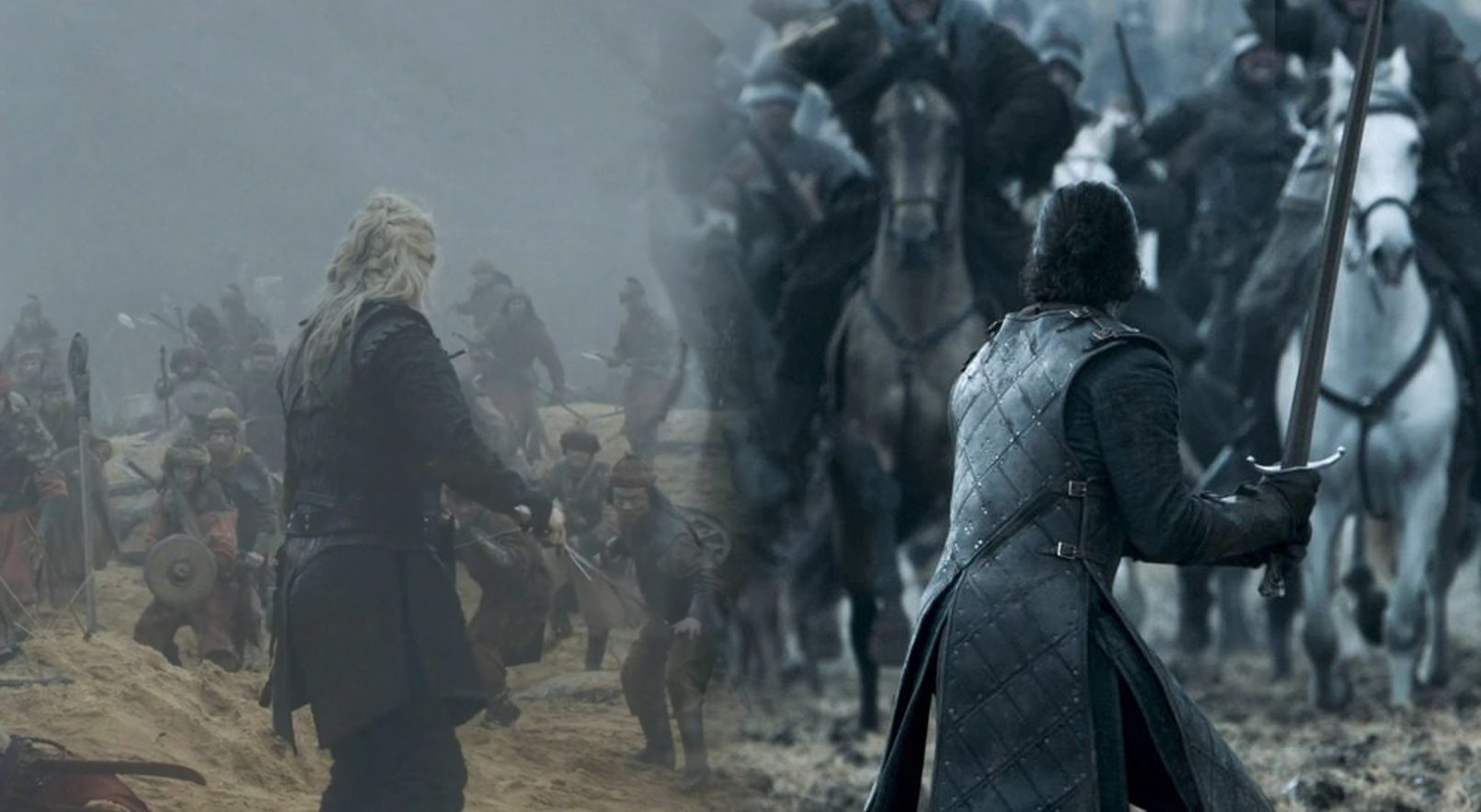We already know from watching the first three episodes of House of the Dragon that an episode wouldn’t be complete without some good Game of Thrones Easter eggs. Up until this point, every episode has made a reference to the show, the books, or shared themes. In other words, it appears that not much changed in Westeros over the century between the two series’ events.
The third episode of Season 1 of House of the Dragon is no exception. The third episode transports us back in time to the heyday of Game of Thrones, from the Lannisters to Nymeria. There are several Easter eggs that only OG followers like you and I can spot, aside from the fact that the settings and cinematography are quite identical.
You noticed that Ser Cole is getting ever closer to the young princess and that Viserys is still fixated on his dragon fantasies. You even guessed that Seasmoke, not Caraxes, was the one who flew in to use dragon flame in the Stepstones to save Daemon Targaryen. But did you notice that, despite Lord Lyonel Strong’s opinion that Rhaenyra and Laenor Velaryon should wed, his son Harwin Strong was completely smitten with the princess covered in blood? Did you see Rhaenyra in the Godswood playing a Queen Nymeria song on repeat? Did you notice the white hart’s symbolic meaning in the Kingswood?
Here are the House Of The Dragons Episode 3 Easter Eggs:
Crabfeeder Has Greyscale
The strange burn marks on Prince Drahar, a.k.a. Crab Feeder’s skin, are apparently hidden by the strange mask. But if we look at him more closely, it appears that he may have a condition called “greyscale” that GOT viewers are all too familiar with. The sickness known as greyscale was frequently discussed in Game of Thrones. Shireen, the daughter of Stannis Baratheon, had grayscale. Ser Jorah Mormont also had it. It is a contagious skin condition.
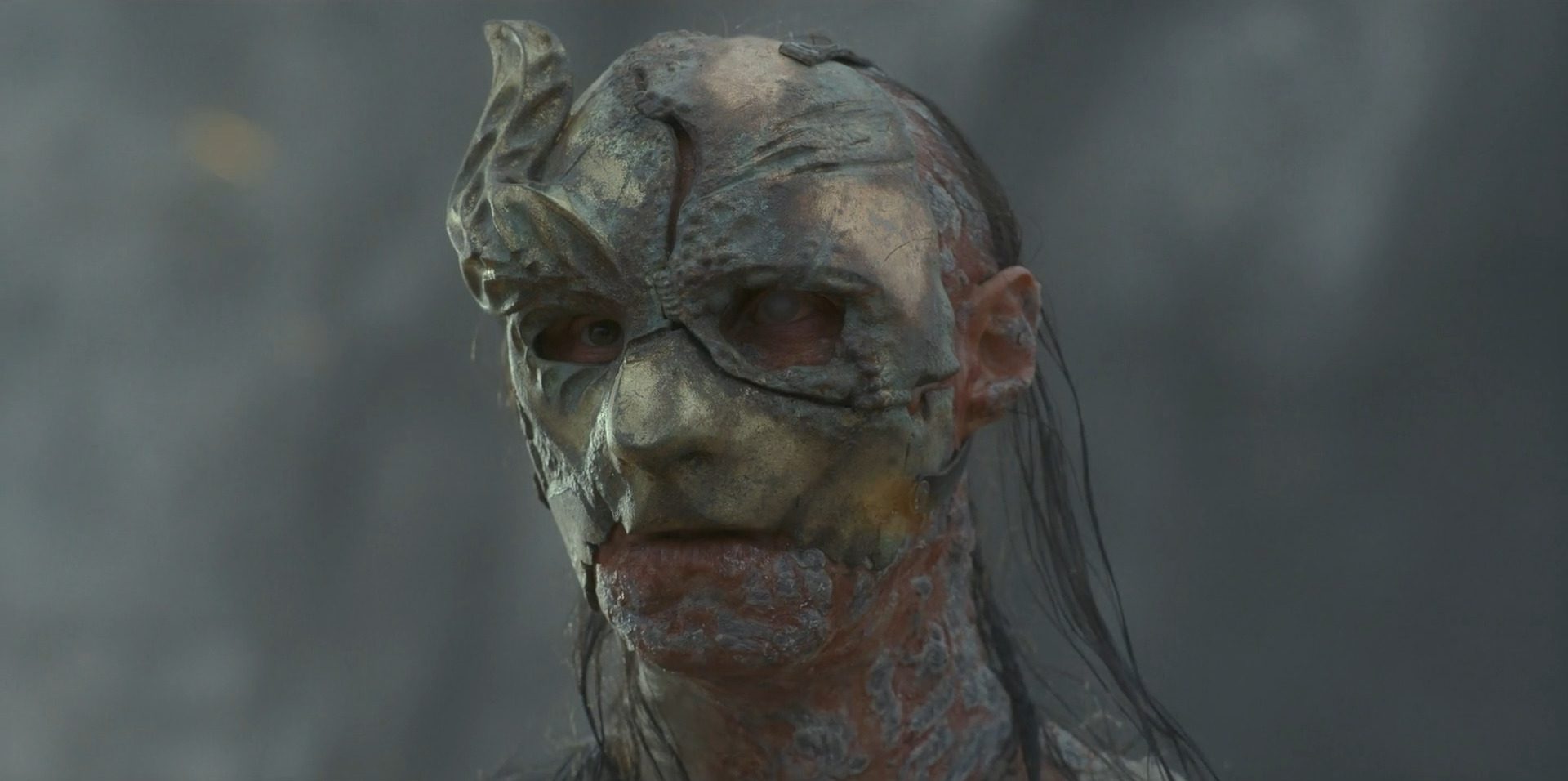
Greyscale people are exiled from society and work as stonemasons in the ruins of Old Valyra or the deserted metropolis of Essos. The majority of the time, Crab Feeder wears a mask over his face, but occasionally we can take a look at some of his skin, which resembles Jorah Mormont’s skin after Samwell Tarly removed the greyscale from it.
Ser Jorah, who got greyscale in Season 7 of Game of Thrones, believed he was on the brink of death. Samwell Tarly, however, managed to remove the contaminated skin from his body, and he eventually survived in greyscale. Similar to Crab Feeder, his skin appears to have been burned off or destroyed in large portions. He might have some degree of grayscale, it’s possible. If he was able to peel or burn some of the contaminated skin, it’s possible that he covers the areas that aren’t completely healed. The “unknown reason” for his burns could be greyscale.
Battle Of The Bastards Similarities
Anyone can have a different take on this, but it felt like the classic Battle of the Bastards was referenced in the final fight between Crab Feeder and Daemon Targaryen. Jon Snow and Ramsay Bolton battled in the Battle of the Bastards. The name of the fight refers to the fact that both were born outside of marriage. Likewise, it appears that Daemon Targaryen and the Crab Feeder share similar pasts.
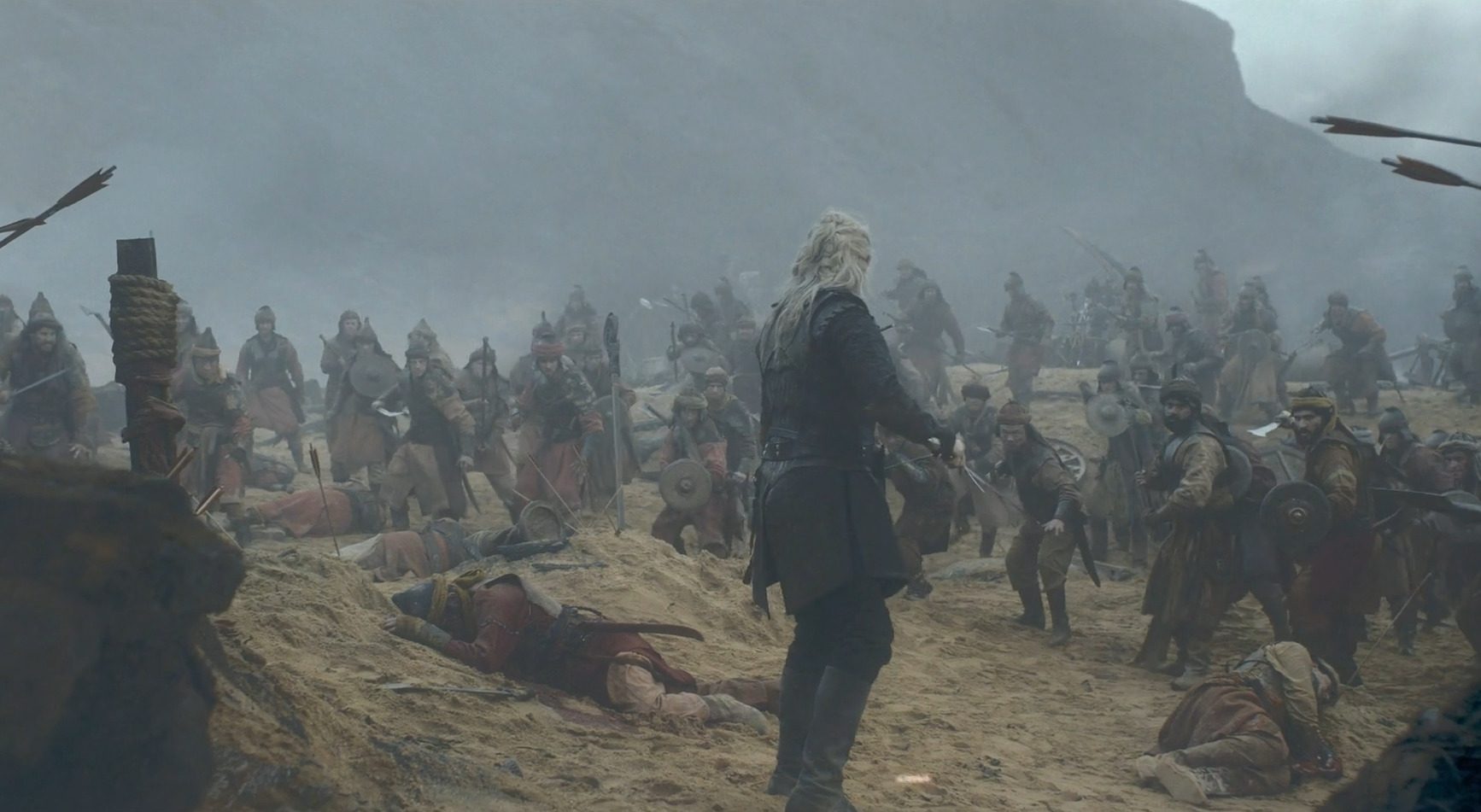
While Daemon is the rebel prince who was left behind by his own blood brother, Crab Feeder opposes the King’s authority in King’s Landing. There is a similarity in that regard. Daemon’s direct approach to Crab Feeder is comparable to Jon Snow’s direct approach to Ramsay. The sudden appearance of Laenor and the dragon Seasmoke also makes us think of the sudden appearance of the Warriors of the Vale. After all, Miguel Sapochnik, the co-showrunner of Season 1 of House of the Dragon, directed Battle of the Bastards.
A Boar Attacks Rhaenyra Like Robert Baratheon
This is more of a parallel than a direct reference. As you may remember, the Lannisters made damn sure Robert Baratheon was excessively drunk during the hunt before he was gored to death by a wild boar. Similar wild boar approaches Ser Criston and Rhaenyra in HOTD Episode 3 while they are in the woods. After Criston successfully stabs it to death, Rhaenyra repeatedly stabs it to release her anger and wrath at the current troubles.
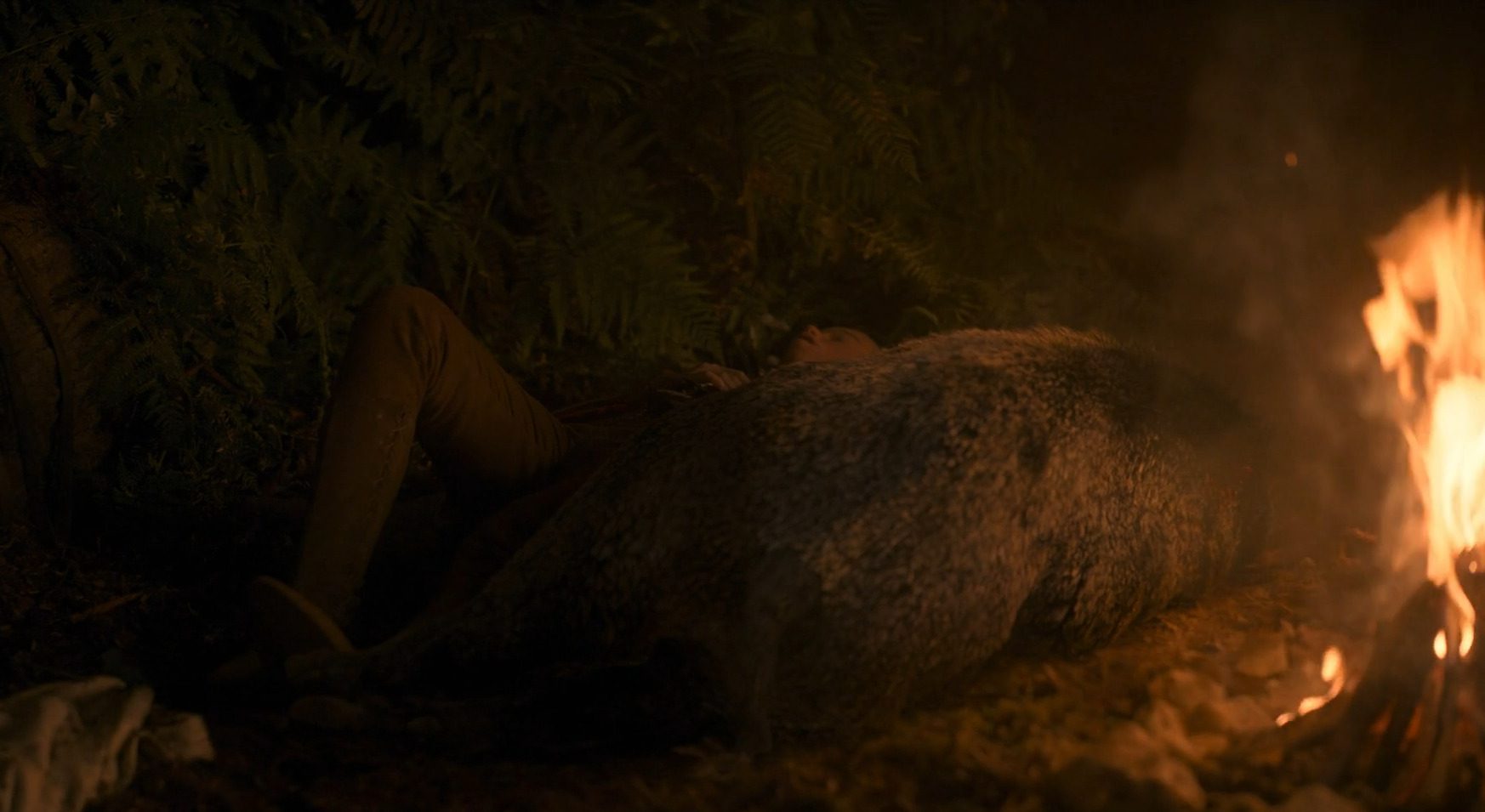
I’m reminded of Robert Baratheon’s tragedy because Rhaenyra has a similar but even harsher tragedy than the Baratheon king. In the novels, she is devoured by Sunfyre, the dragon that belonged to Aegon II, while her son Aegon III is made to watch. Additionally, Rhaenyra is the rightful heir to the throne, whereas Robert Baratheon served as the king. It might be the writer’s way of warning Rhaenyra that danger awaits her and that enemies are preparing to jump on her. It is a sign of how exposed she is now that Aegon II has been born.
Also Read: House Of The Dragon Episode 3 Recap: Daemon Is The Most Badass Character
The White Book
Remember the scene from the Game of Thrones season 8 finale where Brienne of Tarth was reading over the White Book, which listed every member of the Kingsguard along with their noteworthy accomplishments? I felt that was one of the few enjoyable parts of the finale. In a statement to Jaime Lannister that Brienne left in the White Book, she mentioned that he died defending his queen, Cersei.
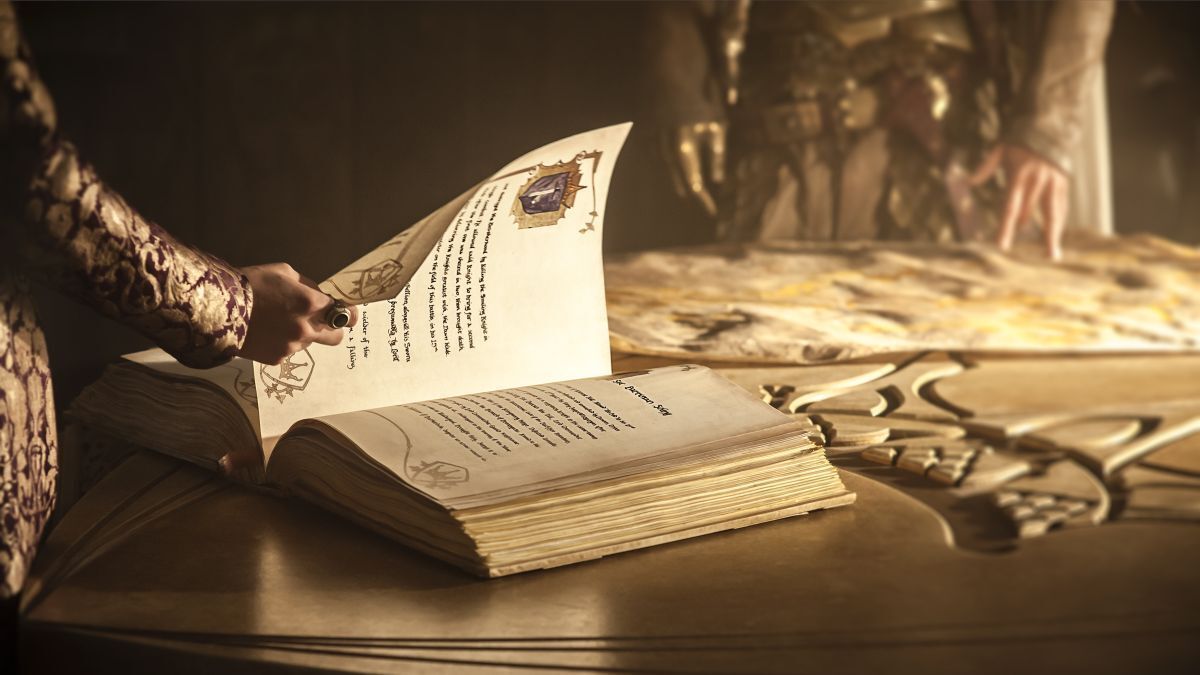
Brienne wanted to make sure he was remembered as an important figure because she wanted him to be. In the most recent HOTD episode, Ser Criston Cole makes reference to The White Book. He made reference to the White Book having his name on it, which reminded me of Brienne’s scene in the Game of Thrones finale.
The Lannisters
The lions from the GOT universe make their first appearance in HOTD episode three. Yes, I’m talking about the Lannister family. Lord Jason Lannister, as well as his identical twin brother Tyland, are introduced to us. While Jason is presented as a potential partner for Rhaenyra, Tyland works at the King’s court. The fact that Lord Jason exhibits the typical Lannister arrogance, pride, and ego is not at all unexpected. He quickly made me think of characters from Game of Thrones like Cersei and Tywin Lannister.
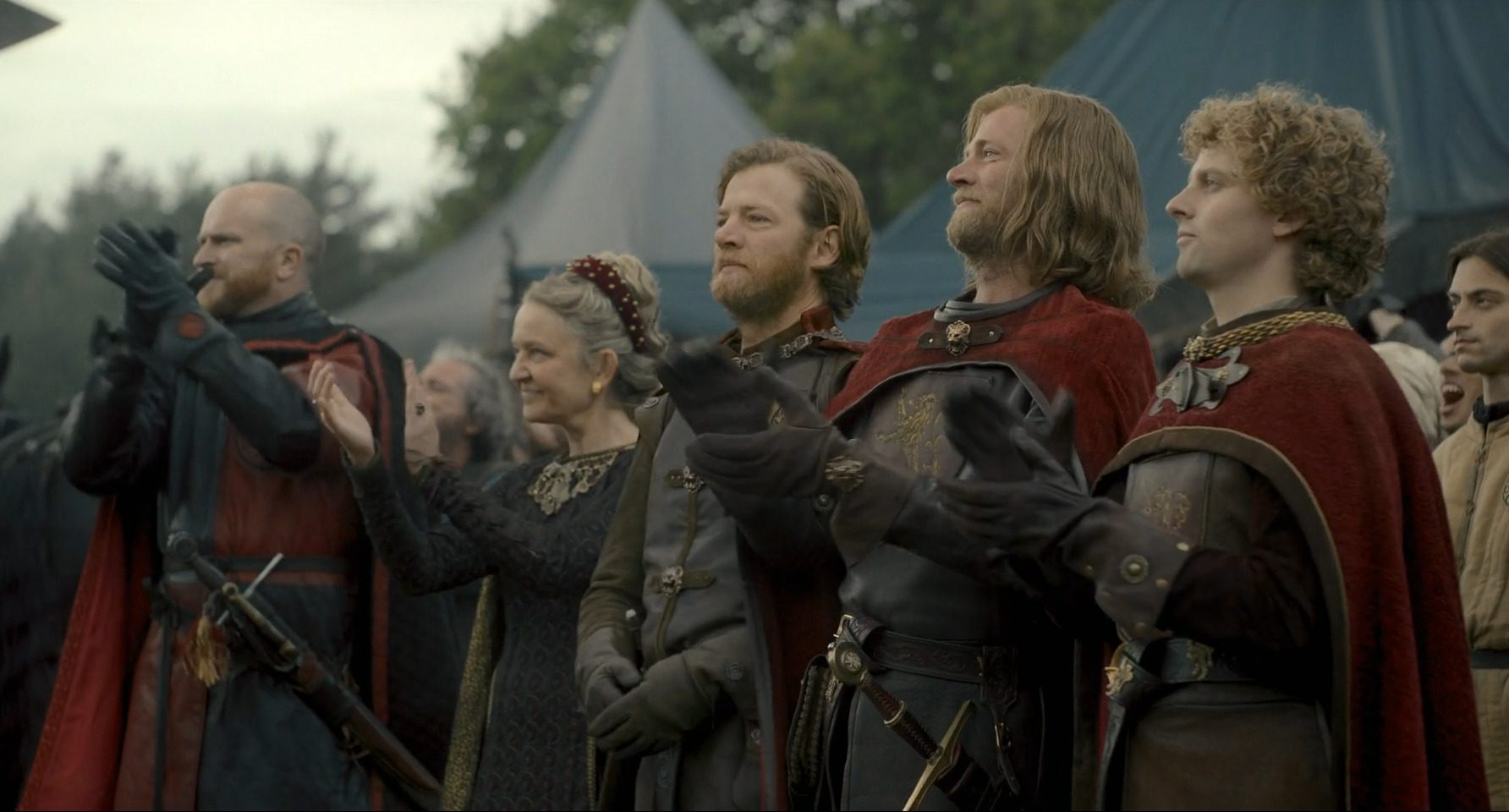
Naturally, he brought up the Casterly Rock, which appeared in Season 7 and was mentioned countless times in Game of Thrones. Jason lavishly glorified Casterly Rock, the Lannisters’ home, in his efforts to win Rhaenyra. He claimed that Casterly Rock offered views of the Sunset Sea and The Wall in the distance. In Game of Thrones, the enormous riches of the Lannister family were frequently discussed, and HOTD also made reference to it.
In a cunning statement, Jason claims to have the “means” to create dragon pits that can house Rhaenyra’s dragons. This was his style of approaching her about marriage. Historically, though, relations between the Lannister and Targaryen families have not been good. Game of Thrones did a good job of hinting at that, and Rhaenyra’s animosity toward Lord Jason added to the evidence. Then there are additional references to the Sunset Sea and the Wall. The Wall needs no introduction, and Sunset Sea is the area to the west of Westeros from which Arya sailed in the Game of Thrones finale.
Harwin Breakbones And Larys Clubfoot
Several new characters are introduced in the third episode of season 1 of House of the Dragon, but two in particular—Lyonel Strong’s sons—serve as Easter eggs and foreshadow future events. First is the arrival of Larys, who suffers from an injured foot: in the book, this one was twisted at birth, resulting in him being nicknamed “Larys Clubfoot.” Also featured is Harwin Breakbones, who earned his title due to his enormous stature and strength. In Rhaenyra’s upcoming House of the Dragon storyline, he is appointed Captain of the City Watch and plays a significant role.
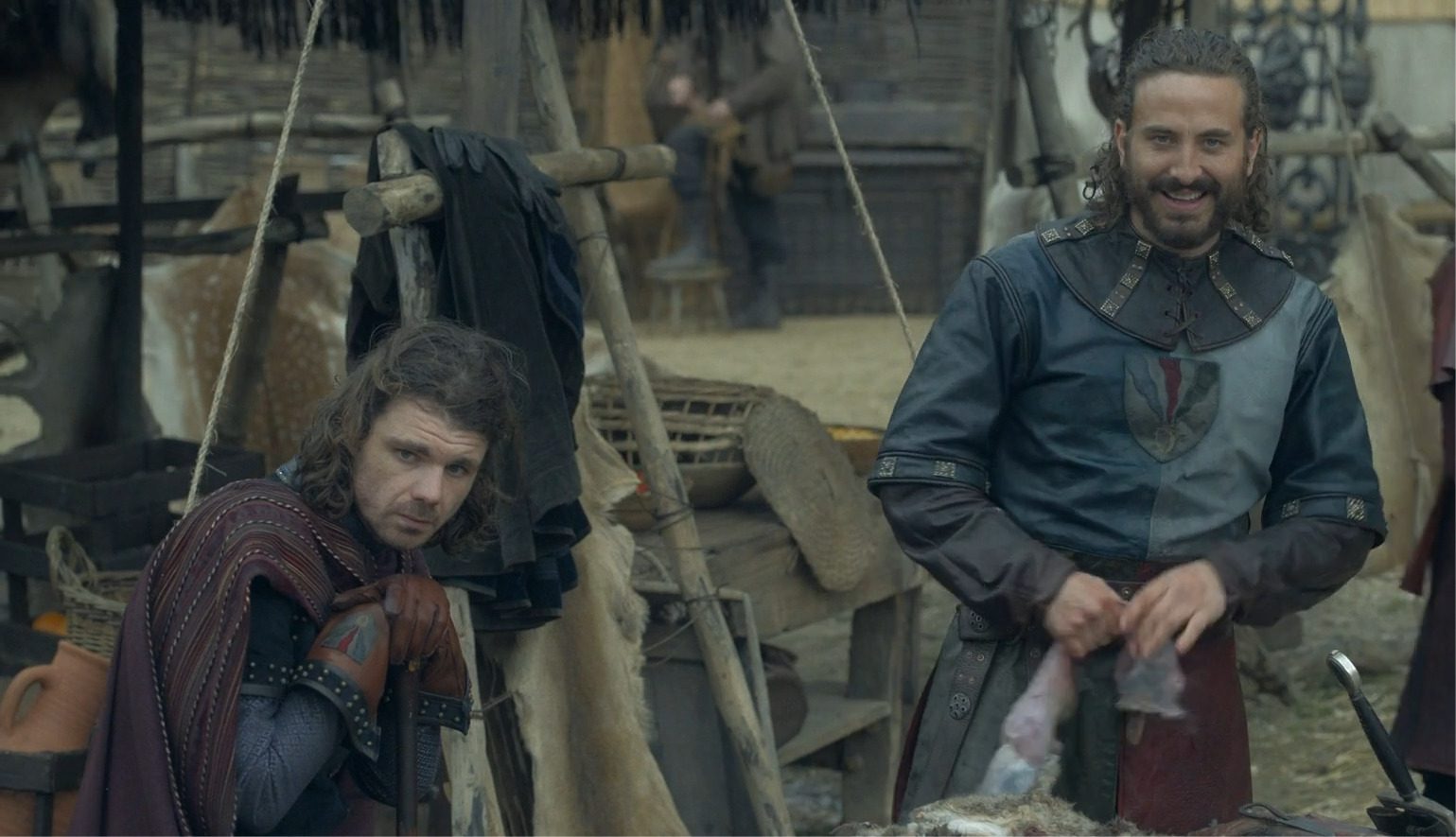
The Song Rhaenyra Loves
At the beginning of the episode, Rhaenyra is skipping court in a rebellious manner by relaxing in the garden with her wine, books, and personal singer. With the words “Under the dragon’s eye,” the singer closes the depressing song, giving us the impression that it is a song celebrating Targaryen greatness. The minstrel begins the song once more with the words, “She left with her boats, and her folks/Her heart shattered for those -“.
The song is interrupted by Alicent’s entry, but it is obvious that it is about Nymeria, the mythical queen of the Rhoynar who guided her people on an emigration across the seas from their homeland along the Rhoyne river in Essos. Nymeria’s 10,000 ships eventually landed in Dorne after numerous terrible attempts to find a secure place to live. She married Mors Martell and set the ships on fire. All of this was done “under the dragon’s eye” and at the peak of the Valyrian empire. Moreover, Arya Stark’s direwolf was given this warrior queen’s name.
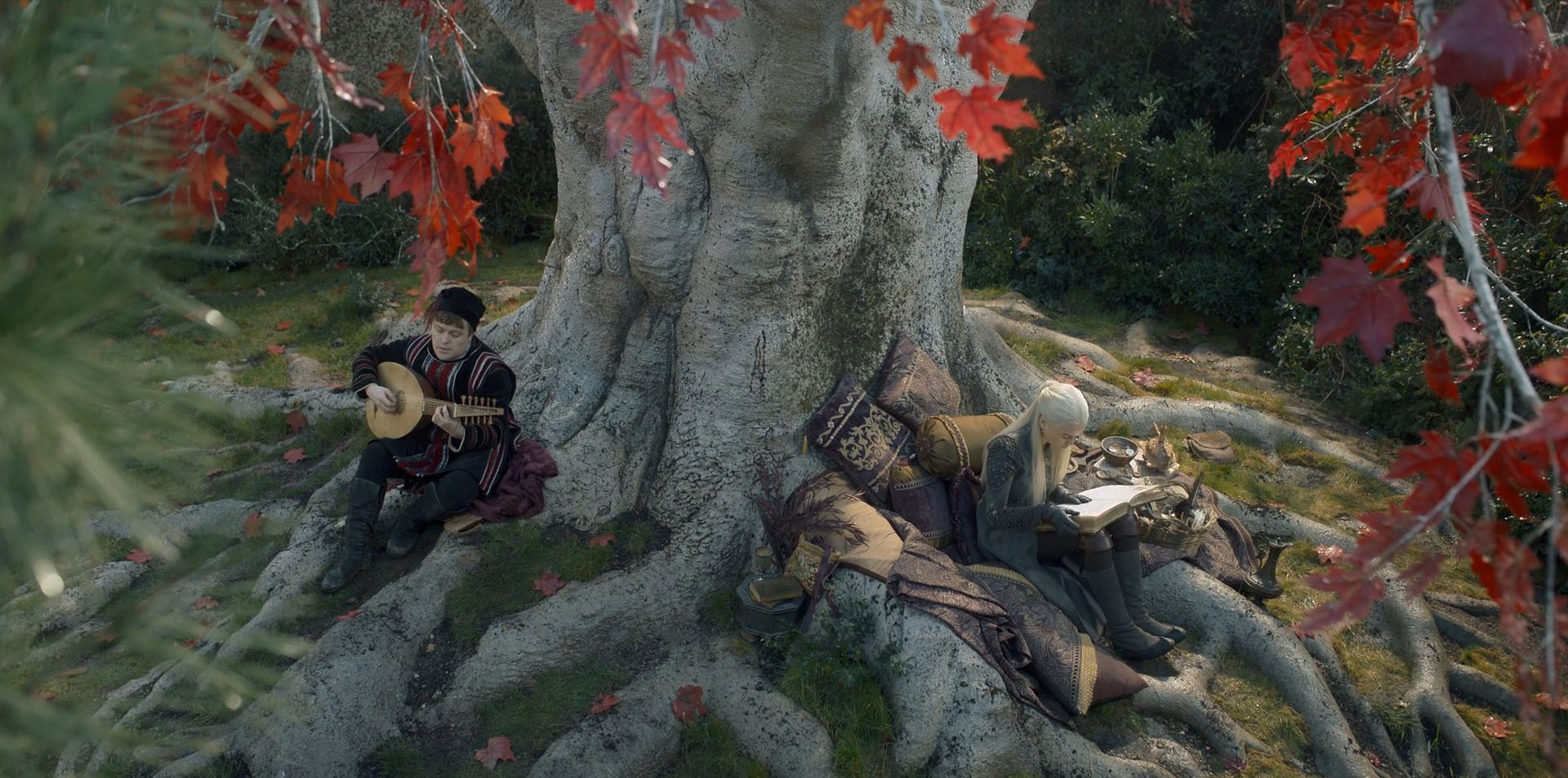
In just three episodes, Rhaenyra has twice been seen studying Nymeria in House of the Dragon. In the first episode, Alicent questions Rhaenyra about the history of the queen; now, Alicent is spoiling Rhaenyra’s laid-back mood. HBO is once again trying to convince us that Nymeria is a hero while also showing how shattered the girls’ friendship has become. After all, 10,000 Ships, a show about Nymeria, is one of the numerous Game of Thrones spin-offs under development. Aside from the meta-joke, you might not have noticed that the minstrel’s name was Samwell, hinting that future Night’s Watch member Samwell Tarly possessed a traditional Westerosi name. Samwell is being ordered by Rhaenyra to keep playing the same song.
Also Read: Top 10 Most Popular Game Of Thrones Characters: Jon Snow Is Not On The Top
The Black Swan
Rhaenyra finds herself listening in on several highborn women’s conversations when she first enters what will be referred to as “the party tent” at the royal hunt. Even though they are discussing how Daemon’s fight in the Stepstones is crumbling, they are specifically worried about how Lord Swann’s niece, Lady Johanna, has been kept hostage by the Crabfeeder. But since he’s stingy, this Lord Swann won’t pay the ransom. When Alicent asks about what will happen to Lady Johanna, another woman responds that there is a report that she will be sold to a Lys pleasure palace.
The problem is that it isn’t a rumor. The author of Fire & Blood, George R.R. Martin, offers a few interesting lines about Lady Johanna Swann, writing, “When her infamously stingy uncle refused to pay her ransom, she was auctioned to a pillow house, where she grew to become the famous prostitute called as the Black Swan, and mistress of Lys in all but name. Unfortunately, despite being fascinating, her story has little to do with the history of today.”
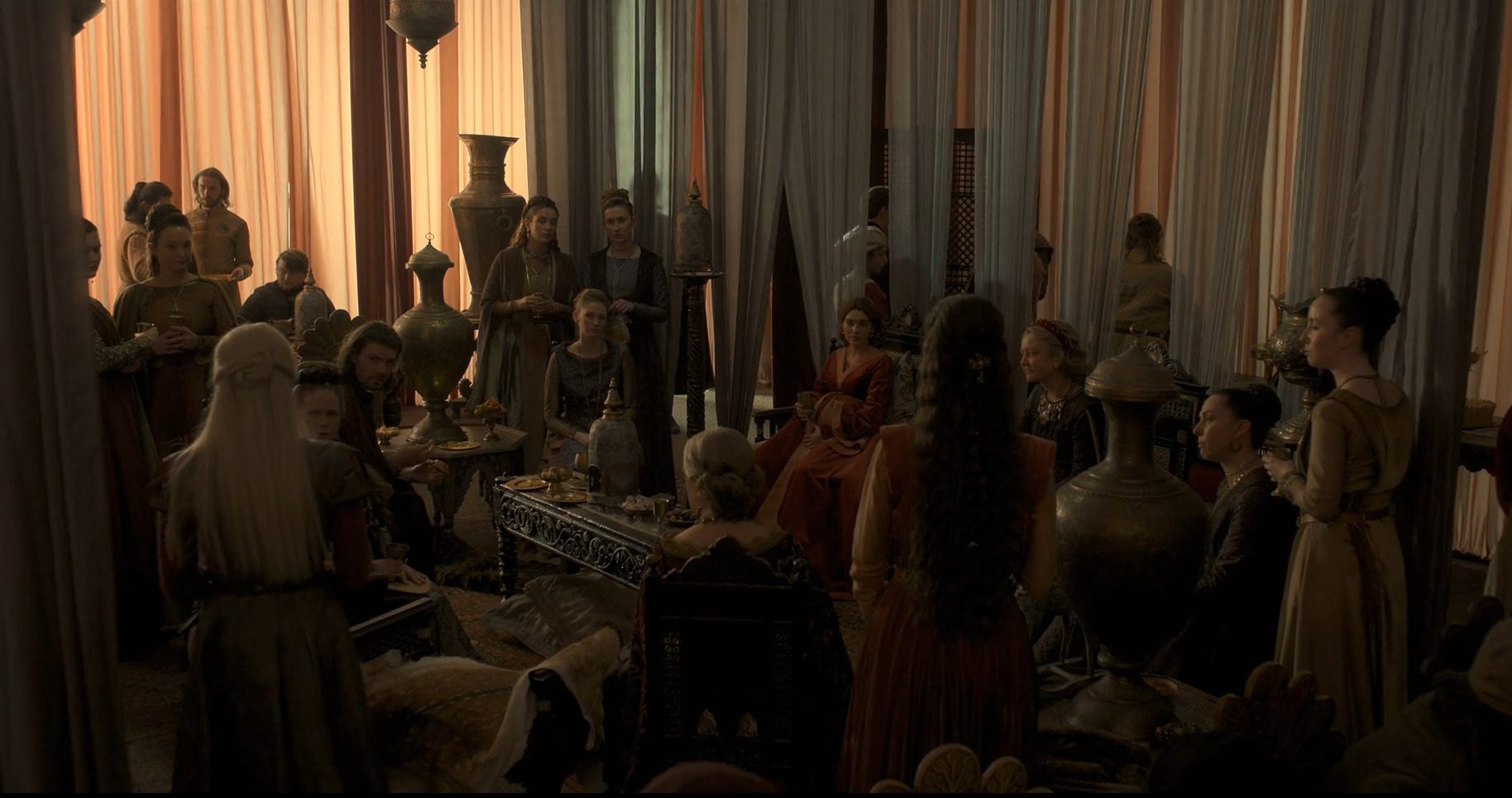
Apart from a brief reference in one of the “Dunk and Egg” tales, it is the only mention of Lady Swann in the books. Still, you have to admit that it’s an interesting side note. Martin obviously has a narrative in his head and has given this character some attention. If not, why even bring it up in Fire & Blood? Why is she even mentioned in House of the Dragon? Will we someday learn more about this person, or is it just Fire & Blood easter egg?
The Sign
House of the Dragon provided us with some insightful “royal figures as hunted wildlife” metaphors, following the example of Becoming Elizabeth, The Queen, The Crown, and even Game of Thrones itself. When Viserys comes to the royal hunt location, he is informed that hunters have sighted a white hart. Ser Otto Hightower claims that the white hart, who is regarded as the “king” of the Kingswood, is a signal that the Seven will bless the day in general and baby Aegon in particular. The royal hunters, however, fail to capture the white hart.
They only succeed in catching a stag that the king will spear to death. Viserys can’t even get the strength to kill a tied-down animal with a single blow while he’s horribly drunk. This scene serves as a metaphor for how powerless Viserys has been as king and how his incapacity will do more harm than good. In the meantime, Rhaenyra not only kills the boar that tries to harm her, but the white hart also pays her a visit.

Not Viserys or Aegon, but she is chosen worthy of the Throne by the forest. It’s interesting to note that Rhaenyra orders Ser Criston to stop trying to kill the hart. The animal enjoys its freedom and right to life. Therefore, Rhaenyra has not only received a blessing from the white hart, but she is also granting it the freedom she so deeply desires to the animal that serves as a metaphor for herself.
The White Hart GOT Reference
The white hart deer plays a significant role in episode 3, with Rhaenyra’s reaction to it being a scene dripping with symbolism and importance for her position as heir and future as a queen. However, it’s also a Game of Thrones Easter egg. In the literature of A Song of Ice and Fire, white harts are, in fact, thought to be magical beings, but the name also refers to a ship that is a unit of Joffrey Baratheon’s royal fleet.
It is destroyed by flames at the Battle of the Blackwater, another fight involving two rivals for the Iron Throne and involving troops from King’s Landing and Dragonstone, possibly providing more insight into what is to come with the Dance of the Dragons. Similar to how Arya Stark saw a white horse in season 8, episode 5 of Game of Thrones, Rhaenyra also sees it, which further connects the two characters given their shared love of Nymeria and distaste for marriage.
Also Read: Top 10 Best Game Of Thrones Episodes Ranked: From Battle Of The Bastards To Blackwater

